16 for ‘16: West Hawaii Today recaps the biggest headlines in the year that was
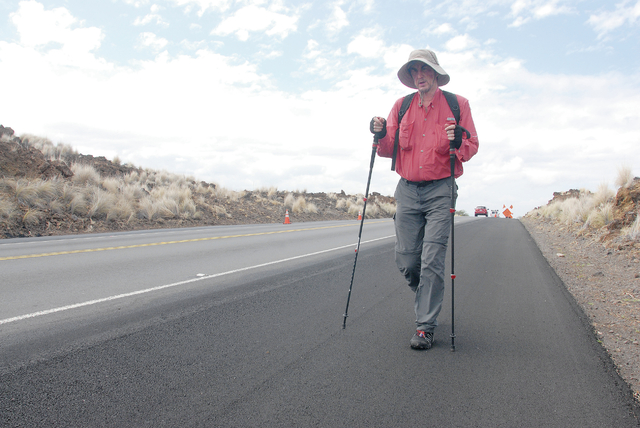
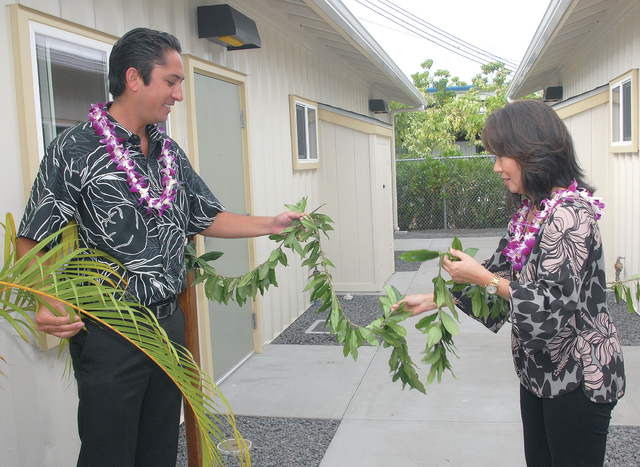
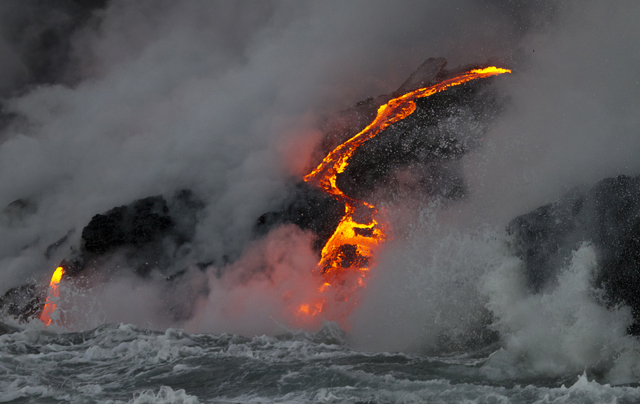
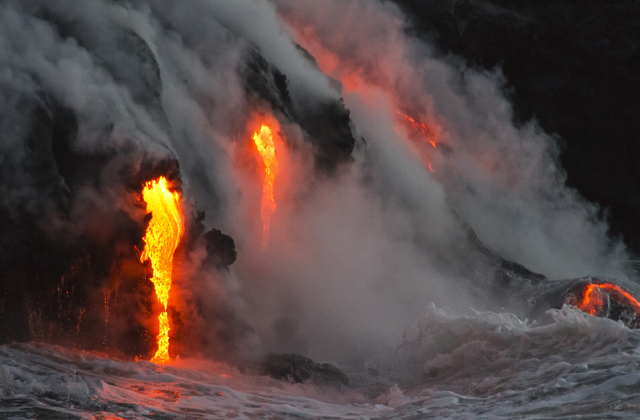
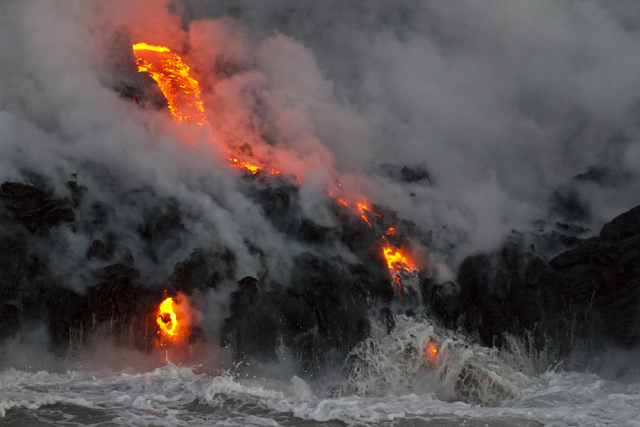
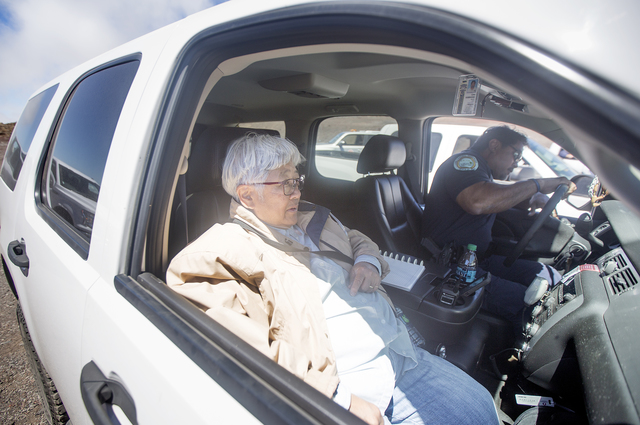






KAILUA-KONA — Fixtures closed, but new ones opened. A mayor was acquitted while a new administration swept into office.
It was a year of years, 2016, in West Hawaii. Former Mayor Billy Kenoi’s pCard saga ended while new, old Mayor Harry Kim waltzed into office after trouncing the competition during the August primary.
Some stories were heartbreaking — goodbye Ulu, Dr. Kopp and too many others, it seemed. But it was a year of growth as well — a new bypass road, a direct Japan flight added and groundbreaking on a $90 million judiciary complex and a Kona brewery, a staple that outgrew its current footprint but chose to stay on island.
Hawaii also caught the world’s attention.
Legal setbacks could cost the island the Thirty Meter Telescope. The Canary Islands have been selected as the alternate site should the proceedings delay the project more. Lava hit the ocean, creating new land, and tourists far and wide flocked to see. And we’d be remiss not to mention it snowed on Mauna Kea.
Here’s West Hawaii Today’s 16 for ‘16, our top 10 stories from the last year with six honorable mentions.
And here’s to a prosperous, and newsy, 2017.
1. Kenoi Trial
Billy Kenoi became the first sitting mayor to be tried on criminal charges in Hawaii history. He was charged with theft and records tampering following West Hawaii Today’s 2015 reports that the popular and charismatic mayor used his county-issued purchasing card, known as a pCard, at hostess bars, other drinking establishments and for personal items such as a surfboard and bicycle.
After a high-profile, five-day trial that included testimony from two island journalists and a lot of accountant types, broken up by humorous quips from celebrity chef Sam Choy, a jury took about a day to clear Kenoi of felony theft charges. Kenoi, considered a rising star in the Democratic Party, acknowledged he reimbursed the county for more than $30,000 in personal charges. In all, he charged about $130,000 during his eight-year tenure, including numerous alcohol purchases.
Later, in a settlement with the county Board of Ethics, Kenoi admitted he violated the county ethics code in his use of his pCard and promised not to do it again.
2. Kim Wins
Harry Kim didn’t just sweep a crowded field of 13 to win the mayorship in the primary election, he stomped it into submission. Winning 51.6 percent of the vote, Kim was able to skip the general election and get right to work picking his Cabinet.
The popular former mayor, who sat out from 2008-2016 after serving the allowed two terms, rode a wave of skepticism about government with his slogans of trust and transparency. His grandfatherly manner and tee totaling attitude likely appealed to a constituency torn over indictments already looming over his predecessor.
3. New Bypass, Big Plans
Hawaii Island saw the opening of various parks and roads during 2016, as well as the start of work on a much-needed judiciary complex and affordable housing expansion. There was also the decision to keep brewing beer in Kailua-Kona.
The big one was the bypass.
After more than a half-century of daydreaming, planning, legal action and construction delays, the entirety of the Mamalahoa Bypass opened to the public Nov. 4. The 2.2-mile road from Halekii Street in Kealakekua to a revamped intersection at Mamalahoa Highway in Napoopoo cost $27.1 million and took more than two years to complete. The first 3.5 mile segment of the bypass, connecting Alii Drive in Keauhou to Halekii Street in Kealakekua, opened in 2009.
That wasn’t all.
Judges, attorneys and community leaders gathered to break ground for the $90 million Kona Judiciary Complex near the Makalapua Shopping Center on Oct. 24, and the Kona Brewing Co. announced in January it plans to expand into a new 30,000-square foot brewery and canning operation on a 2.6-acre parcel just down the street from its current location on Pawai Place.
Land was also blessed in October for two developments intended to provide 170 affordable housing rental units for Kona families and seniors, the $52 million Kamakana Villages at Keahuolu off Ane Keohokalole Highway.
4. KOA Gets International Flight
The first international flight in half a dozen years arrived at the Kona International Airport at Keahole in December, bringing with it 280 passengers — a full flight — to the Big Island from Japan.
The flight, which runs thrice weekly between Kona and Haneda Airport in Tokyo, marks the return of international flights to the Big Island for the first time since 2010, making the airport the second international gateway in the state. It is sure to be an economic boon for the island.
5. TMT Battle Continues
The long-simmering feud over the proposed Thirty Meter Telescope atop Mauna Kea continued throughout 2016 and might not be resolved in 2017, either.
A contested case hearing over a permit to build the $1.4 billion observatory started Oct. 21 in Hilo with retired Hilo Circuit Judge Riki May Amano presiding over the quasi-judicial proceedings, which are ongoing. The hearing is being held because the state Supreme Court ruled in December 2015 the Board of Land and Natural Resources shouldn’t have approved a permit for an international consortium to build the telescope before the first contested case hearing was held.
Opponents of the project requested Amano be disqualified from hearing the case, citing her nondisclosure of a family membership to the ‘Imiloa Astronomy Center, which is operated by the University of Hawaii at Hilo, master leaseholder for much of the mountain, as a conflict of interest. Despite UH-Hilo reluctantly joining in the request for Amano’s replacement, the Land Board stood firm on Amano’s appointment.
Earlier this month, Hilo Circuit Court Judge Greg Nakamura ruled orally the state also should have held a contested case hearing for TMT’s sublease for Mauna Kea. E. Kalani Flores, a Hawaiian cultural practitioner, appealed the sublease approval after being denied a hearing in 2014. A written ruling was pending as of Dec. 23.
Amano denied a request by opponents to put the permit hearing on hold following Nakamura’s ruling, saying she doesn’t have “a basis to stay” the hearing.
Meanwhile, the TMT International Observatory board intends to resume construction either on Mauna Kea or an alternate site in the Canary Islands in April 2018. A decision on which site to use could occur as early as October, the board’s last scheduled meeting for 2017.
6. Homelessness
The state and county ramped up efforts to fight the rising tide of homelessness in Hawaii, the state with the largest per capita homeless population in the nation. The government pivoted to a Housing First model, which focuses on long-term housing solutions as opposed to temporary, emergency housing.
Out of this effort came the micro housing initiative in the Kona Old Industrial Area, which ultimately provided 23 permanent housing units for chronically homeless individuals, although local businesses took issue with the solution both in terms of its location and its overall efficacy in the fight against homelessness. Dr. Cliff Kopp, a Kona dentist and community activist, strongly disagreed with the notion that permanent housing solutions could adequately address the scale of the problem in West Hawaii. The doctor took to the streets, walking around the island to bring awareness to the need for a large-scale homeless shelter that could support hundreds and get the most vulnerable members of the homeless population, women and children, off the streets expeditiously. Before his unexpected passing in late 2016, Kopp organized several community members and helped create a nonprofit that will pursue his vision into 2017.
7. Queen Kaahumanu Highway Delayed
The Department of Transportation said this fall that the widening of Queen Kaahumanu Highway from Kealakehe Parkway to Keahole Airport Road is going to take an additional 14 months after a planning document failed to account for right-turn lanes on the new highway.
The “area of potential effect,” which shows areas that could be affected by construction work, didn’t include connections to side roads, which ended with a total of four segments from two historical trails being breached. Those trails, one of which is a 19th-century kerbstone horse trail, are listed on the State Inventory of Historic Places.
The project, initially expected to finish in September 2017, now won’t be done until November 2018.
8. Gotta Love Lava
The June 27 lava flow that menaced Pahoa and put Highway 130 and the rest of lower Puna at risk two years ago ceased June 6.
But Madame Pele continues to put on a show, as lava from Puu Oo vent crossed the Kalapana emergency route July 25 and cascaded into the ocean the following day. It was the first time molten rock from Kilauea Volcano entered the ocean inside Hawaii Volcanoes National Park since August 2013.
Visitors and residents alike flocked by the thousands to see the ocean entry, by land, helicopter and lava-tour boat.
9. Peter Boy’s Parents Charged
A Hilo grand jury in April indicted Peter Kema Sr. and Jaylin Kema for the death of their son, Peter Kema Jr., aka “Peter Boy,” the abused 6-year-old Big Island boy whose disappearance 19 years ago sparked a statewide media firestorm.
Peter Boy went missing sometime in late spring or early summer 1997. Kema Sr. told authorities in August 1997 he left Peter Boy with a longtime family friend, “Aunty Rose Makuakane,” at Aala Park in downtown Honolulu.
In December, Jaylin Kema pleaded guilty to manslaughter and agreed to testify against her husband during his 2017 trial.
10. Those We Lost
Advocate, visionary, musician, cultural gem, and local icon. These are some of the terms that describe the community members that Hawaii Island said a hui hou to in 2016.
Gil Kahele
Kahele, a Democrat who represented Hilo in the state Senate, died Jan. 26 following a series of heart attacks. He was appointed state senator in 2011 and then elected in 2012. He also founded the Paa Pono Milolii citizens group, which settled a land tenure issue for South Kona residents displaced from the 1926 Mauna Loa lava flow.
Aunty Elaine Watai
Watai, an activist for youth, a community organizer and public safety advocate, died Feb. 4 at 77. Her interest in working with people began during her time as a hotel bartender, and when she retired she didn’t stop working, moving instead into arranging events for community groups. She formed Kealakehe Community Association, which has helped the Kona Task Force on Feeding the Hungry raise funds for about two decades.
William Kimi Jr.
Better known as “Uncle Billy,” Kimi, a hotel manager, business and local icon, died Feb. 19 at 93. One of the island’s most well-known residents, Kimi had a number of landmark businesses, including the Uncle Billy’s Kona Bay Hotel in Kailua-Kona, Uncle Billy’s Hilo Bay Hotel and the Kona Inn Shopping Village. He also managed Uncle Billy’s Fish and Steakhouse for 45 years, closing it in 2010 to spend more time with his family.
Donald Isbell
Known affectionately as “Pops” and “Mr. IZ,” Don Isbell, a longtime psychology and band teacher at Konawaena and Pahoa high schools, died April 26 at 85. The Kealakekua resident and U.S. Army veteran was also a Boy Scout leader and member of various organizations including the West Hawaii County Band, Kona Lions Club, and Hawaii Masonic Society.
Aunty Elizabeth Maluihi Lee
Lee worked to perpetuate Hawaiian language and culture throughout her life before dying Aug. 9 at 87. She was also a distinguished lauhala weaver, earning recognition from institutions including the Bishop Museum. In 1993, the Office of Hawaiian Affairs named her a “living treasure.” She was also a founder of Ka Ulu Lauhala O Kona, an organization created to preserve and perpetuate lauhala weaving.
Cliff Kopp
Kopp, who during his last decade of life was regarded as one of Hawaii Island’s most prolific community advocates, died Oct. 14 at 60. A dentist by trade, Kopp was heavily involved in the local Rotary Club and efforts to help the homeless. He also chaired the annual Kailua-Kona Community Christmas Parade and Independence Day Parade and Fireworks Extravaganza in Kailua-Kona for more than a decade. He died just after completing his fifth around-the-island walk to raise awareness of homelessness on the Big Island.
Clift Tsuji
State House Rep. Clift Tsuji died Nov. 16. He was a proponent of biotechnology and genetically modified crops, and also supported geothermal energy as an alternative to imported fossil fuels — stances that won him supporters and opponents. The U.S. Army Reserve veteran was first elected to the House in 2004 to represent District 2, which includes Keauakaha, parts of Hilo, Panaewa and Waiakea. He died in office.
Barry Mizuno
Mizuno, a prominent business and community leader, died Nov. 26 at 68. A University of Hawaii Board of Regents Hawaii Island member from 2011 until his resignation earlier this year, Mizuno also served two Hawaii County administrations as finance director and managing director. He also was active in the community, serving on a variety of boards, working groups, and task forces. He was a member of a variety of organizations including the Japanese Chamber of Commerce and Hawaii Island Chamber of Commerce, among others.
Ernie Sr., Ernie Jr. and Guy Cruz
One of Hawaii’s most beloved musical families lost three members of the ohana in the same year.
“Waimea Cowboy”Ernie Cruz Sr. the patriarch of the family, legendary musician and former pastor at New Hope Puna and Pahoa Assembly of God churches, died May 14 at 76 at his home in Arizona.
His son, Ernie Cruz Jr. — one half of the legendary duo Ka‘au Crater Boys — died Sept. 21 at age 56 after being pulled unresponsive from the water at Oahu’s Sandy Beach.
Two days later, Guy Cruz, also Ernie Sr.’s son, and a resident of Pahoa died at 49.
Although music was in his DNA, Guy was reluctant to follow the footsteps of his father and brother, instead joining the Army. After his discharge, he released a solo CD in 1998.
Honorable mention
11. Rapid Ohia Death Advances
HILO — State and federal researchers have confirmed recently that a giant ohia tree near Laupahoehoe was killed by rapid ohia death, marking the first known case of the plant disease in Hamakua.
The disease was first spotted in Puna in 2010 and now infects nearly 50,000 acres, according to DLNR. State and federal researchers have teamed up to try to combat the disease and implemented a quarantine on ohia leaving the island.
12. Fixtures Close
Amy B.H. Greenwell Ethnobotanical Garden, an educational and cultural gem in Captain Cook, closed its doors to the public Jan. 31.
The closure of the 15-acre oasis took place as Bishop Museum looks for a new owner/steward for the land, as well as hundreds of acres in Waipio.
Another West Hawaii fixture, the Astronaut Ellison S. Onizuka Space Center at KOA, shut its doors in March.
13. Tragedy in Honaunau
Janexty Kamakamaeuluwehi Kaaloa, known more commonly as Ulu, was killed by a truck on Highway 11 as she walked home from Honaunau Elementary School. The 10-year-old’s passing sent shock waves through the community and served as a catalyst to renewed conversations about speeding restrictions and other safety precautions in school zones across Hawaii Island.
14. Try Wait
Kaupulehu is getting a 10-year rest. A fishing ban was instituted throughout the roughly 3.5 mile stretch of coastline off West Hawaii, which is a particularly popular spot for local spear fishermen. DLNR officials hope to replenish fish populations and reef health during the hiatus, but were met with substantial resistance from Native Hawaiian factions who believe the fishing ban puts an undue cultural burden on their backs, and is the result of a problem they had nothing to do with creating.
15. No More Swimming with Dolphins?
Swimming with the dolphins is a popular and lucrative industry in Hawaii, but NOAA spent much of 2016 examining increased regulations or even a banning of the practice altogether, citing disruptions to the marine mammals’ way of life. Passionate debate was had on both sides of the argument in an all too familiar scenario in Hawaii in which environmental and economic concerns must be weighed against one another.
16. Animal Advocates Sue for Smear
A judge in December dismissed four allegations against the Hawaii Island Humane Society as part of their ongoing legal dispute with Big Island Dog Rescue, but the case is far from over.
The lawsuit, filed by Big Island Dog Rescue in April, alleges the society stole credit for dog shipments and that people connected to the Humane Society tried to smear the organization. HIHS in return filed suit against BIDR for alleging slander.





